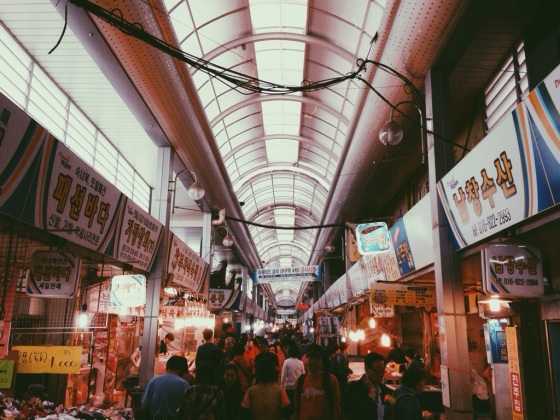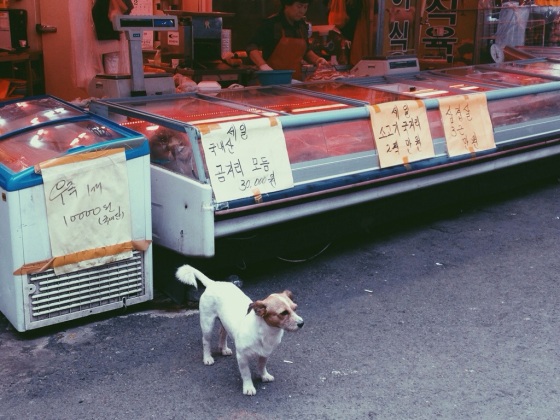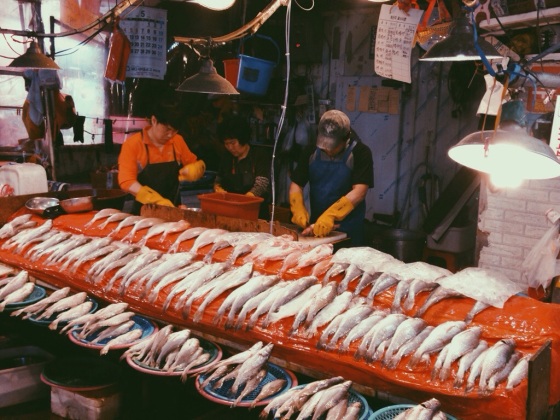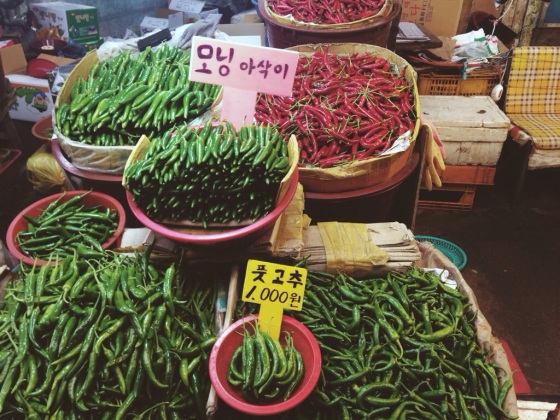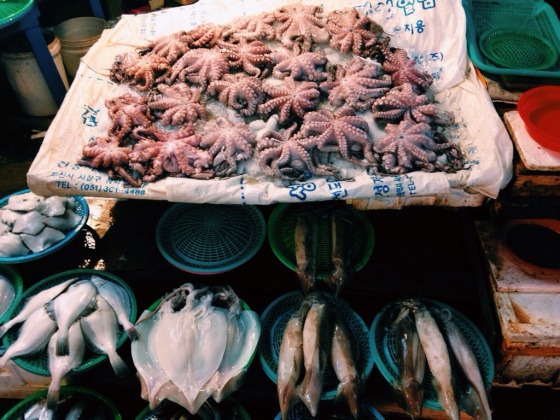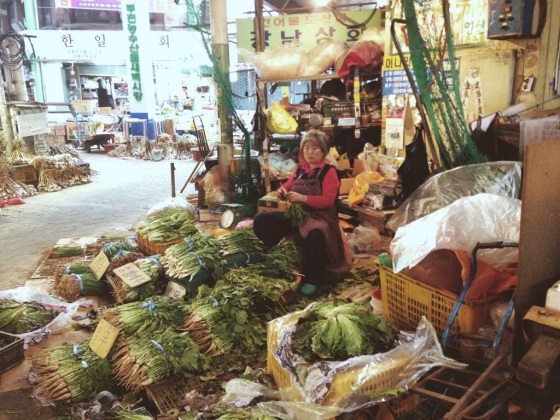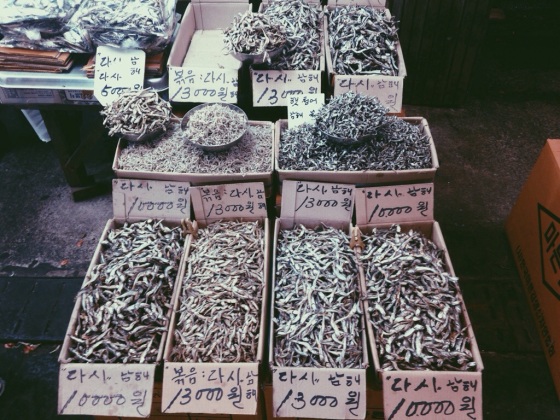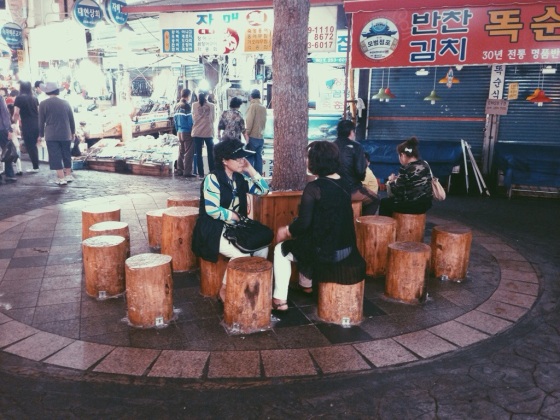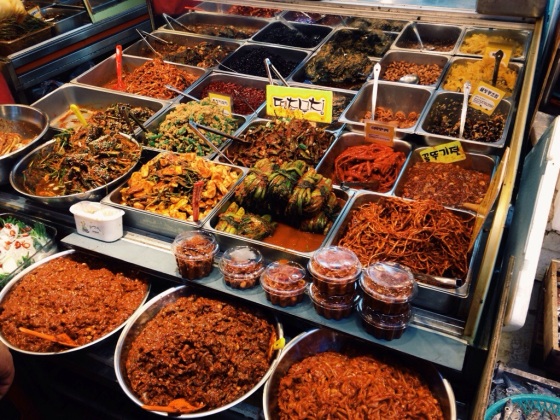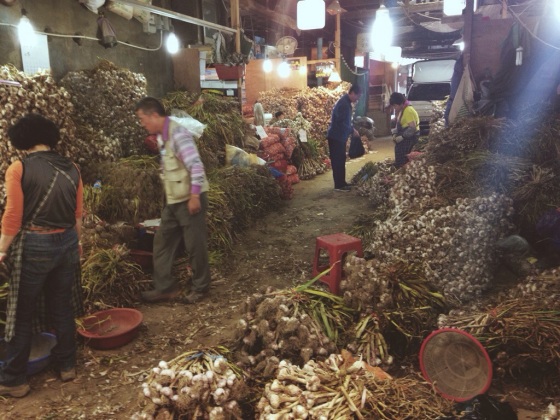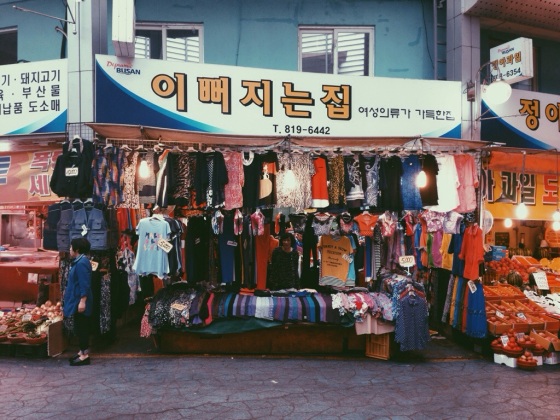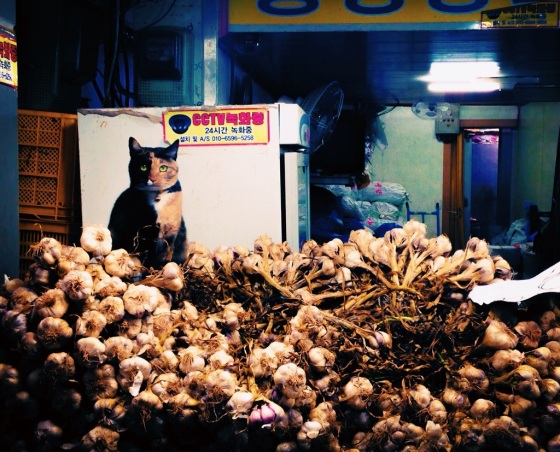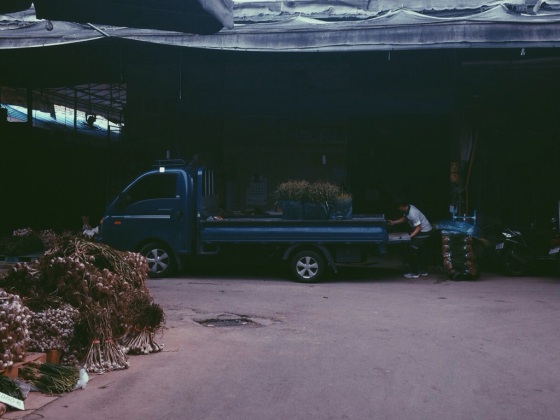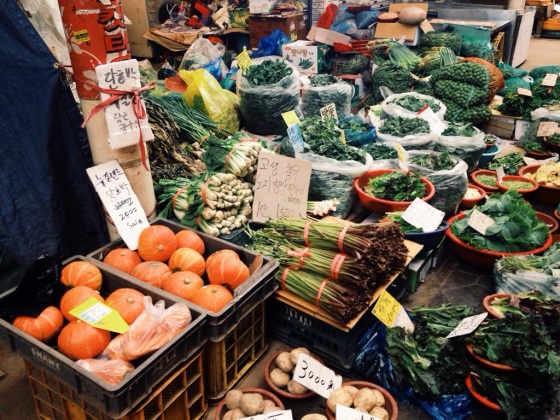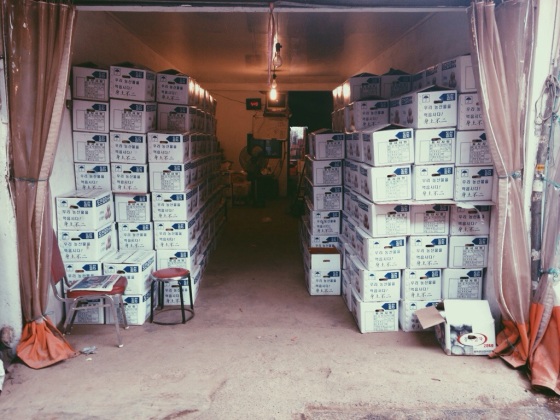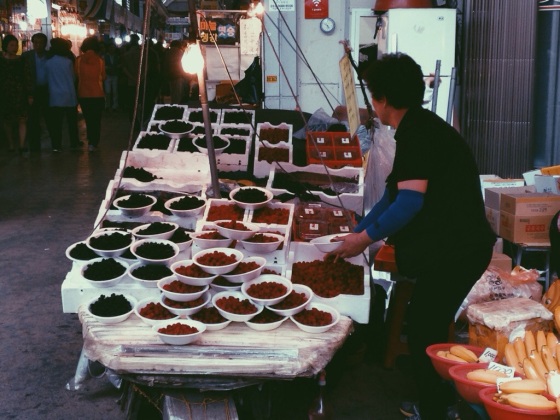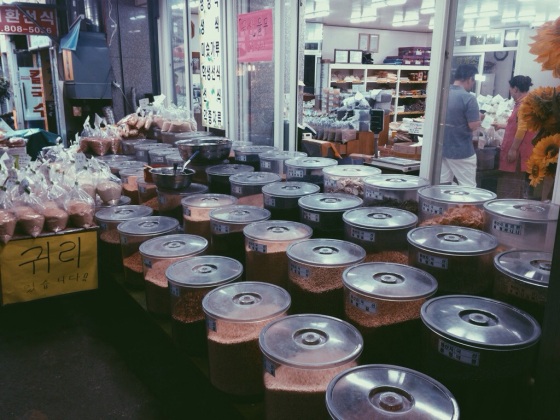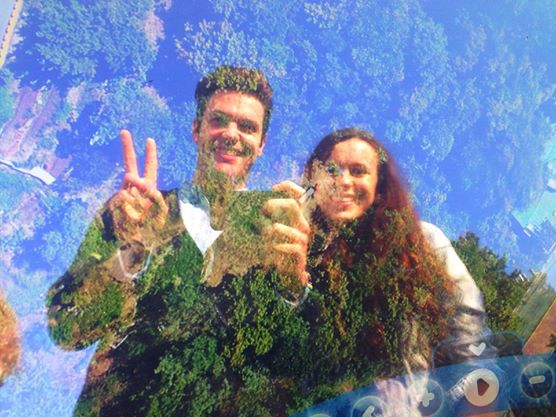It has been quite some time since I have posted an update about my day-to-day life in Busan. Between trips to the Philippines and China, busy school days that require restful weekends, and blog posts concerning my Korean Bucket List, I’ve neglected talking about myself (one of my favourite pasttimes)! That said, March marks a big turning point for my year abroad in South Korea, and I figured it was time to provide some tales about “life round here”. This blog is quite simply about change, since that has been a persistent theme in every facet of my life lately, whether discussing my school, my relationships, or even the weather.

January Birthdays
Teaching
Over the last three months, there has been a lot of upheaval in my workplace as a result of a merger between my hagwon and another. The ownership and management switched hands in early December, drastically altering the private academy I started with in August. There has been a lot of change; some that I’ve welcomed and has made my life as an expat working in a foreign environment much easier; some that have been wholly unwelcome and caused quite a bit of (unnecessary) tension and stress. The highs and lows of working as a teacher in South Korea have been much more acute since the merger. The days when I’m able to maintain a bubbly countenance and a focused perspective on the reasons why I’m here (my kiddies, saving money, experiencing Korean culture) are amazing, and luckily on those select days when I’m quivering with rage through gritted teeth and clenched fists, I’m able to turn to my solid global support system in South Korea, Canada, and the Philippines.
My experiences with my hagwon are not unique – the culture of teaching for foreigners in South Korea has been rapidly changing over the past year. Schools downsizing, merging, and closing are becoming the new norm. When I compare my story to some true “hagwon horror stories”, it’s pretty clear that the old adage of “things could always be worse” rings ever true.

Sweet Nina, pre-perm
This past Friday was pretty bittersweet. An absurd number of my favourite students ran up to me in the hallway to tell me they were switching to a different academy (some literally across the street), or would be receiving private lessons in their homes, or were simply discontinuing their English language instruction altogether. A quick high five or hug later, and they were in the elevator, out of my academy and my life, likely forever. I was lucky enough to write to a quick note to a few particularly bright students in their homework books or quickly tell them at the end of class how smart and amazing they are. I’ve grown so attached to these little noodles after spending nearly every day with them over the last seven months, and even though I knew this day would come eventually, I expected it to be on my own terms, at the end of my contract. I suppose this is what it’s like to be a parent. Even though my nest is much emptier, there are still so many amazing dumplings to teach (somewhat functional) English to, and of course, gush over in future blog posts.
Friday also marked the last day for seven – count ’em, seven teachers. I’ve been fortunate enough to have taught with five of these teachers (Joanna, Jenny, Sun, Flora, and Elly) since my very first day and it’s so strange to think that I won’t have the opportunity to coo and complain about the students and classes we share together in the teacher’s room anymore.
Come Monday, there will be new books, new students, new teachers, and new rules to greet. While it has been incredibly difficult to say goodbye to so many faces that have become so familiar and comforting over these past few months, I’m excited to break away from certain aspects of teaching that have become monotonous lately and begin the second half of my year as a teacher with a renewed attitude.

Graduation photos with my noodles from Wish Class
Graduation
In line with all “changes” at my school, twenty-two of my third year kindergarten students “graduated” last week! If you didn’t know, kindergarten graduation is a HUGE deal at Korean hagwons. Basically, every private academy in South Korea is in a blind, panicked frenzy from the beginning of January until mid-February, as they work to teach their students a graduation play and/or song. The next six weeks are all about line memorization, learning to speak into a microphone, effective stage blocking, choreography, and costume selection, in preparation for performance day when the parents come to watch. The stakes are high – if performance day is not up to snuff, many parents are likely to pull their students out of the academy. There’s a lot of pressure for both the teachers and students to perform well, and in my personal opinion, perhaps a little too much pressure to put on children at such a young age.
I was responsible for the graduation performances of both Star and Happiness Class. These are my youngest students, aged 4 and 5, many of whom have only been learning English for half a year. This actually relieved some of the pressure off of me: since they are so young and low-level, it doesn’t really matter what they say or do because they’ll look absolutely precious doing it. Star Class and I practiced a shortened play adaptation of “Five Little Monkeys”, and a song titled “I Am The Music Man”, while I authored a play titled “The Desert Island” (a la my favourite television show LOST), as well as choreography to a song called “Walking Through the Jungle” for Happiness Class. I have to say: after a full six weeks of practicing each of these plays and songs, I truly never want to hear any of them again. After graduation, I still had students humming or making references to their songs and plays, prompting me to threaten removing a star off their sticker board. “Music Man, anneyo! Teacher does not like!”

Star Class angels on Seollal
On the day of graduation, the children, donned in adorable (if not slightly inappropriate) costumes that often showcased their midriffs, were graciously welcomed onstage to perform their class play, song, and dance. I served as the foreign Master of Ceremonies for our school’s graduation performance, so I got to witness every single performance. On the whole, the performances can only be described as “disastrously adorable”. There were lots of issues with sound, blocking, and remembering lines, but at the end of the day, the majority of these children were born the year I was a university freshman – NOT THAT LONG AGO – and still did an amazing job. All the students of Star and Happiness Class received big hugs for bravery and bags of candy for making Dylan Teacher proud.
Starting on Monday, I will only be seeing my seven year old graduates for only two periods a day in the afternoon, as opposed to the five hours I spent with them daily for over half a year. Luckily, my new March schedule has me teaching 2/3rds of these little graduates, who, I can assure you, will be experiencing a whole new level of crazy from “Jombie” (read: “Zombie”) Teacher in the afternoons.

My girls and I (featuring Bacon Boy!)
Goodbyes and Hellos
Part of making it this far into my contract also means that goodbyes are inevitable. Teaching in South Korea is a constant revolving door – people are always coming and going. This transient environment definitely puts an egg timer on becoming close with people.
After seven months together, two legs of “the tripod”, Jess and Maddie, are leaving Busan. They have come to the end of their teaching contracts and will be embarking on a new adventure, travelling across Southeast Asia, India, and South America over the next five months. These two girls have been so integral to every step of my journey – from the world’s longest Facebook thread about getting me to Busan, to giving me an insider’s perspective about life in Korea pre-departure, to serving as my tour guide upon arrival, to travelling to Bijindo and Boracay together, to spending every weekend together – we’ve done it all and we’ve done it all together. I know life will continue in Busan, but it will definitely be an adjustment without my two solid pillars of strength, stinking up my life. Jess and Maddie, I love you both! I am so excited for all of the adventures you are both going to have, and for all of the adventures the three of us are soon to have again. All my vibes to my Curly Sue and Straightened Jew. ❤
Just as I say goodbye to two lovely ladies, I say hello to another friend from Canada, Steph Pellett, who recently made the bold and brave move to move to South Korea to teach! I couldn’t be more thrilled to bring a new friend into the the crazy South Korean fold. It’s seriously perfect timing with the summer season fast approaching and I’m so excited to play tour guide to Steph, while also having a new buddy to blog and do yoga with. Godspeed, Steph!

Namaste
Miscellaneous
A quick rapidfire, bullet-point list of other updates:
– Summer is almost here. While it has been slightly rainier than I would prefer, the temperatures in Busan have been positively sweater-only appropriate. I cannot wait for my Korean co-teachers to throw me shade and mention how “brown my skin looks” after an entire weekend on the beach!
– I’ll be staying put in South Korea for the duration of my contract, travelling only to Seoul for Ultra Music Festival in June, and Jeju-do in July. Mary will be joining me on both trips, and we are so excited to pull out our face-paint for Above and Beyond at Ultra and do some cliff-diving in Jeju! I’ll only be travelling in Korea to save some money because:
– I’ve applied to school in Canada for January 2015! After two years of relative freedom and learning some valuable life lessons, it’s time to once again hit the books in a classroom setting. But, not before:
– I go to Southeast Asia for four months! My current plan is to return to the Philippines once my contract is finished in early August, spend some time with my laberboy in Boracay, see what kind of work I can find, and potentially do some travelling in Thailand and Cambodia before returning to Canada at around Christmas time.
That’s about it for life round here, y’all. Stay tuned for blog updates about my trip to Beijing, and Bucket List posts including Taejongdae Resort Park, Hurshimchung Spa, The Busan Museum or Art, and others! Namaste.
35.172760
129.172905

